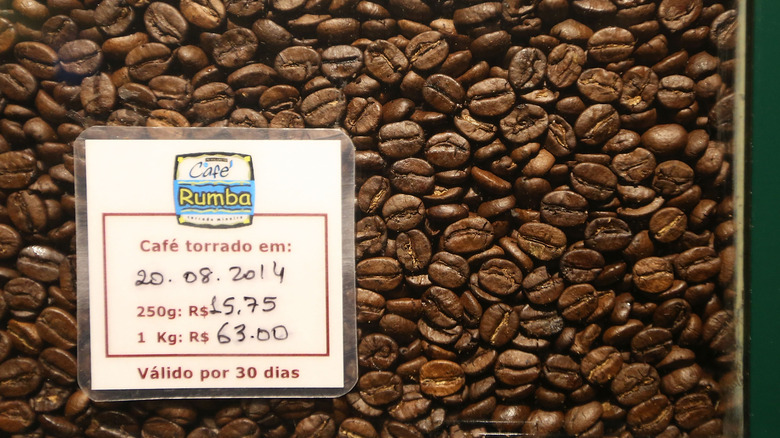Why Global Coffee Production Is Expected To Recover In 2023
Nearly a decade ago, in 2014, a New York café made headlines by making what was then a record-setting $7 latte, made with beans grown in Ethiopia and roasted in Norway, flavored and perfumed by anise and licorice imported from Denmark. The cost prompted one importer to say, "There is nothing, nothing, nothing that will make a latte $7 — except hubris," per the New York Daily News. But we beg to differ, because things have changed since then, and we now know $7 lattes are more common than it seems, thanks to record inflation. And while $7 lattes may not be the norm, they certainly cost more today; a specialty cup of latte at an artisanal coffee shop could cost you $6 plus tax — which is not too far from the then-maligned $7 price tag.
But while numerous economists are warning that food inflation isn't likely to go anywhere anytime soon, the US Department of Agriculture says there are signs that global coffee harvests are on the rebound, and we'll be seeing more beans hit the market in 2023, which could, in turn, be good news for those of us who have been paying a higher price for a caffeine fix.
Coffee bean output is expected to be higher next year
Per the USDA, America's coffee needs are usually met by imported Arabica beans from two countries: Brazil and Colombia. Unfortunately, heavy rains brought on by an early, unseasonal return of the La Niña weather pattern have had a negative impact on coffee harvests in Brazil, cutting harvests and driving up the price of raw beans, per the Economist Intelligence Unit (EIU), who also says this is why the price of Arabica beans had been seen jumping by 30% this year.
But the USDA now says Brazil's output is set to improve as we head into 2023 because its coffee trees have recovered from frosts that took place in June and July. As a result, Brazil is now set to produce 5.1 million more bags in the next year, while Colombia's coffee bean production will remain flat. Indonesia, which grows the cheaper Robusta grade, is also expected to see better harvests, as is India — both thanks to favorable weather conditions. As a result, EIU says coffee bean prices are likely to decline next year.
Still, the EIU wants to temper expectations that an increase in coffee bean production is in the cards since there is still a chance that the La Niña pattern could extend into 2023 or even intensify. If that were to happen, coffee production would most likely fall, triggering a price hike in 2023/24 and bringing that $7 latte closer to becoming the norm.

